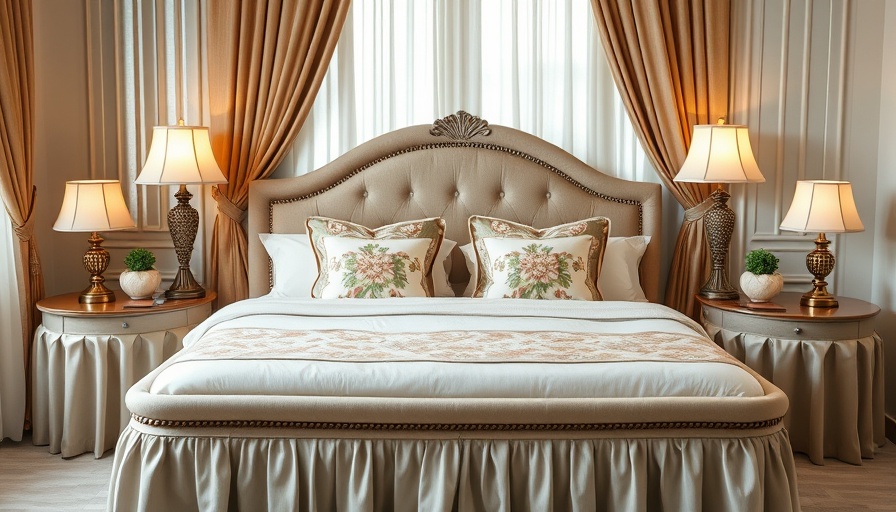
The Revival of Skirted Furniture: A Trend Reimagined
Once relegated to the corners of grandmothers' living rooms, skirted furniture is staging a surprising comeback in contemporary design. No longer seen solely as a relic of the past, designers are incorporating tailored skirts into modern decor, offering a mix of nostalgia and elegance that appeals to today's homeowner. This article examines the shift in perception surrounding skirted furniture and delves into practical ways to integrate it into your space.
Rediscovering Historical Roots
Skirted furniture has a rich history that dates back to the Middle Ages when wealthy households adorned their homes with expensive textiles. Fast forward to the present, and these timeless pieces are being revitalized with a modern twist. Designers emphasize that the resurgence is about balancing tradition with contemporary tastes. As designer Cate Gutter points out, the comfort and familiarity of these pieces are comforting in a world increasingly driven by minimalism and clean lines.
Styles That Make a Statement
Today's skirted furniture boasts a refined appearance—no ruffles or frills in sight. Instead, a tailored skirt with crisp pleats or box-style skirts provides a fresh feel. Mary Patton, an industry insider, suggests that clean silhouettes are key to maintaining a modern aesthetic. She advises homeowners to experiment with different fabric types that make a statement, such as bold stripes or luxurious velvets, which can add depth and personality to a room.
The Art of Pairing
When incorporating skirted furniture into a space, balancing is crucial. Using pieces without skirts can prevent an area from feeling visually overwhelmed. As Liz Williams highlights, mixing skirted items with sleek, leggy furniture allows for a harmonious blend, creating both practical and visually appealing arrangements. Skirted tables, for example, not only conceal unattractive underpinnings but also provide a practical storage solution complementary to your home’s design.
Practical Tips for Stylish Integration
To achieve the chic look of skirted furniture, a few practical considerations are invaluable. Firstly, selecting materials is vital in keeping the look fresh. Fabrics such as crisp linens or orderly velvets can elevate a mundane piece into something special. Furthermore, the length of the skirt matters; it should ideally graze the floor for that tailored appearance while avoiding a ‘short’ or ‘pooling’ look. Gutter emphasizes that intentionality in design can lead to fulfilling and sophisticated environments.
Beyond Trends: The Emotional Connection
Choosing to incorporate skirted furniture into your home can extend beyond mere aesthetics; it can evoke positivity and warmth associated with home life. Designers assert that this style taps into emotions tied to domestic spaces and comfort, resonating deeply with homeowners seeking to cultivate a personalized sanctuary. Infusing this aspect into your decor not only beautifies the setting but nurtures well-being and relaxation.
Conclusion: Elevate Your Home With Skirted Design
Skirted furniture is poised to reshape the way we perceive functional decor in our homes. As this trend continues to evolve, it’s clear that there’s potential for both style and practicality. Efforts to mix, match, and creatively utilize this old-world charm can not only redefine our living spaces but also reflect our unique taste and personality. So, why wait? Consider investing in a piece of skirted furniture that resonates with you, channeling both nostalgia and modern flair.
 Add Row
Add Row  Add
Add 




Write A Comment